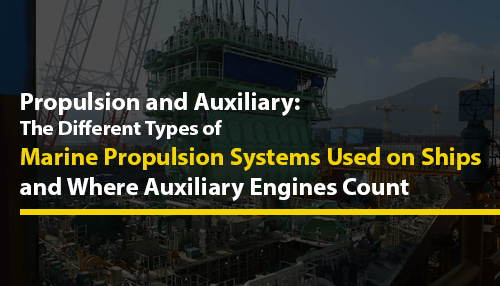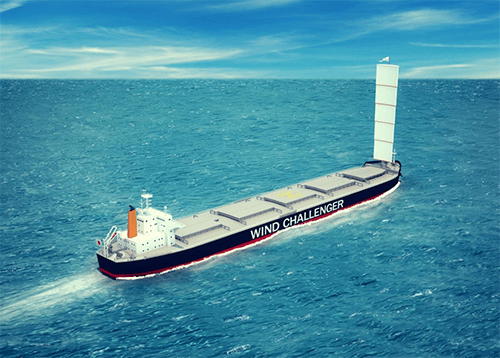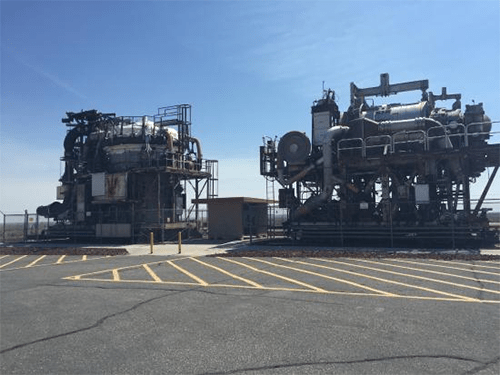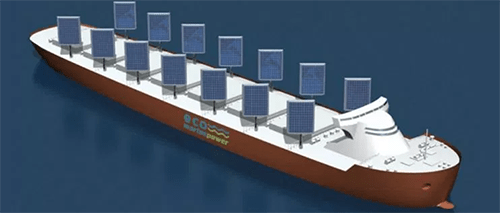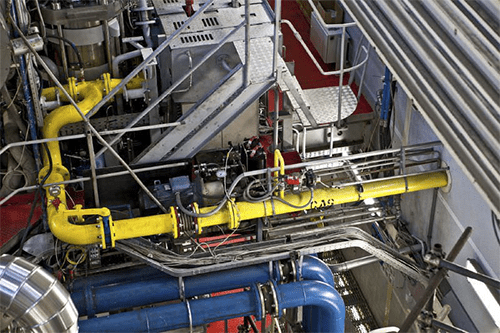Ships use propulsion forces to maneuver themselves in the water. Although there were a restricted number of ship propulsion systems earlier, today there are a few modern systems to consider. Nowadays, ship propulsion is not only about successful ship movement in the water but also about using the most innovative mode of propulsion to enhance a standard of safety for the marine ecosystem and affordability. The quality and type of engines are also important to consider, especially when it comes to auxiliary engines. First things first, let’s review the most common types of marine propulsion systems used on ships, which are:
1. Wind propulsion
Developed as a better alternative to the systems that emit a great amount of CO2 gases in the marine atmosphere, wind propulsion is one of the most common types of marine propulsion systems used on ships these days. However, wind turbine marine propulsion usage hasn’t begun largely in the big commercial ships due to a constant windiness requirement. 2 popular systems of wind propulsion for ships, such as kite propulsion, have been lately used for merchant ships.
2. Diesel propulsion
The most widely used marine propulsion system, diesel propulsion, involves a process of converting mechanical energy from various thermal forces. These propulsion systems are generally applied to all kinds of vessels, as well as recreational vessels and small boats. If you’re looking to buy new and used diesel generators, Swift Equipment Solutions is the industrial equipment supplier you need. Take a look through their product listings or get in touch with them at +1-713-489-0290 or sales@swiftequipment.com with any queries or concerns that they can help you address.
3. Gas turbine propulsion
This type of marine propulsion system is used for both non-naval and naval ships. When it comes to naval ships, though, the gas turbine propulsion system helps to increase the movement of the ships. It’s highly helpful in case the ship is under attack, for example.
4. Nuclear propulsion
Nuclear maritime propulsion is used in naval vessels. The nuclear propulsion system uses the nuclear fission process and is an incredibly complicated system that consists of several water reactors and some other equipment required for vessel fuel. The ship’s nuclear reactors are also used to provide electricity on the ship. Nuclear propulsion is being planned to be used in a few merchant ships as well.
5. Fuel cell propulsion
The fuel cell propulsion system uses hydrogen as the major component of the ship’s fuel. No combustion is used to create electricity in the fuel cell. The whole process is absolutely clean and thus has been considered a highly critical alternative to the marine propulsion system. In general, there are several kinds of propulsion based on the fuel cell propulsion head, such as the molten-carbonate and Photon-Exchange-Membrane (PEM) systems.
6. Solar propulsion
First used in 2008, solar propulsion is another marine propulsion system that is still used for ships. The solar propulsion system boasts a lot of perks, including a significant reduction in poisonous CO2 emissions. The solar propulsion system can generate a capacitance of about 40 kW.
7. Biodiesel fuel propulsion
The biodiesel propulsion system has recently been regarded as the future marine propulsion system. Nowadays, a lot of tests and research are being conducted to determine the sustainability of this biodiesel fuel propulsion system that has already been gradually in full operation.
8. Steam turbine propulsion
The steam turbine propulsion system uses coal or any other fuels that generates the steam to propel the vessel. This maritime propulsion system is rarely used these days, as it was widely used between the 19th and 20th centuries. In some countries, it’s still possible to see ships using the steam turbine propulsion system, though.
9. Diesel-electric propulsion
One of the oldest maritime propulsion systems that has been used since the early 1900s, diesel-electric propulsion uses a generator combination run by electricity that’s attached to a diesel motor. Nowadays, merchant ships and submarines use the diesel-electric maritime propulsion system to get themselves moving.
10. Tri-fuel or gas-fuel propulsion
To decrease emissions from the ships, LNG fuel is currently burned in the main engine after certain modifications and changes in the propulsion engine. This is renowned as a tri-fuel or gas-fuel propulsion system since it’s able to burn diesel, heavy fuel, and gas fuel.
11. Water-jet propulsion
Having been used since 1954, water-jet propulsion is another maritime propulsion system to know about. This system has a variety of critical perks. First of all, the water-jet propulsion system doesn’t contribute to noise pollution. Plus, it provides faster speed to the vessels. When compared to other systems, the water-jet propulsion system is more expensive to maintain and this can create some troubles for the shipowner.
Where Auxiliary Engines Count
Auxiliary engines are as important as the main engines, but it depends on which one you choose. No matter your needs, you’re more likely to need both engines since each one has its own role. Marine auxiliary engines are created to run near and on the water; however, they are usually used to power winches, water pumps, generators, etc. Depending on the ship, some auxiliary engines have other functions to offer.
Nowadays, the Caterpillar marine engine has gained popularity for many reasons. Since everyone has their own needs, though, it may be extremely hard to determine which engine you need and whether you need an auxiliary engine or not. You can use this buyer’s guide to find out more information on buying a marine engine.
The different kinds of marine propulsion systems have their own perks and drawbacks to offer. Depending on the requirements, necessities, and needs, the right type of marine propulsion system has to be fitted. In this case, the vessel will be able to provide its excellent service capacities. When choosing the type of marine propulsion system, there are many factors to consider, as one system might be outdated while another might be too innovative and astonishingly expensive to maintain. Consider all the pros and cons before making your final choice.

